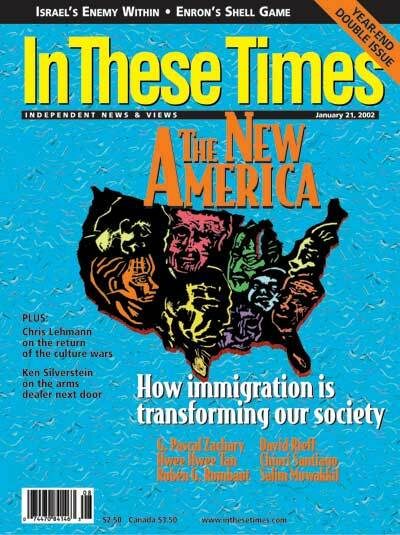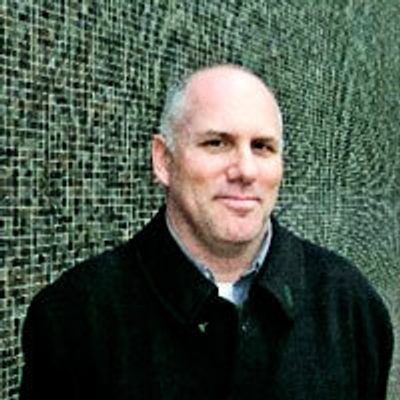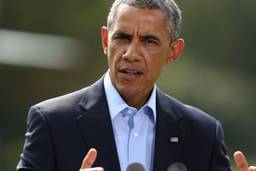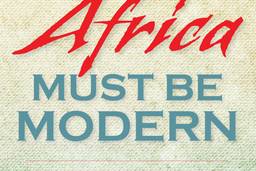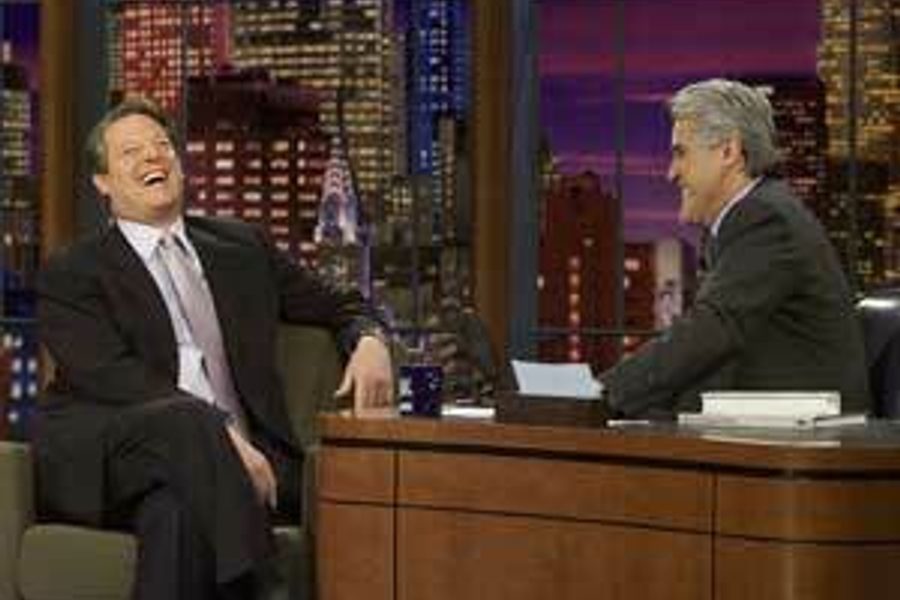
The tall, white-washed mosque is set back from a busy commercial street that cuts through a densely populated valley east of San Francisco. On a Friday in October, five rows of Afghan men pray in the hot, midday sun. They are mourning the death of an old friend in Hayward, a strip of suburban California that is home to one of the largest concentrations of Afghans in the United States.
In front of their mosque, on top of a 50-foot pole, flies an American flag. The flag went up after September 11. Before then, the Afghans felt no need to advertise their loyalty to America. Things have changed. These Afghans suddenly have a lot to prove. The U.S. government is fighting a self-styled war on terror, and President Bush has declared that those who fail to help in this war are the enemy.
Along with other immigrants, they are racing to keep pace with the reality of America under threat. The task is complicated because there no longer is a single criterion, if there ever was one, of what it means to be an American. In World War II, Americans jailed law-abiding citizens of Japanese descent as a precaution. Today, Afghans freely criticize the U.S. bombing of their country, and even complain that Islamic extremists have reason to resent America. President Bush, though elected on the strength of his fervent Christianity, has visited a mosque and pointedly says he has no argument with genuine Muslims, only the phony ones who endorse or defend terror.
In Californiathe first state in which ethnic minorities comprise the majoritybecause no ethnic or racial community commands enough of a following, no great pressure exists in the U.S. for subcultures to conform to a single, national ideal.
As the men disperse, their prayers done, three volunteers from a local civil rights group hand out leaflets, telling the Afghans not to speak to any FBI agents without an attorney, which the group will supply as needed. One of the volunteers, Nadia Olmedo, is herself an immigrant, a social worker whose parents are from South America. People in this country should feel solidarity with Afghans, not fear them, she tells the men.
Her words echo an American motto: E Pluribus Unum, out of many, one. Yet this phrase is deceptively simple. Just how does a society create unity out of diverse peoples?
The United States once imposed uniformity on its people by actively discouraging newcomers from maintaining ties with their homelands or speaking their native languages. Other countries in the world, including Germany, adopted this philosophy of assimilation. One of the outcomes of the civil rights movement was to discredit assimilationist policies.
When the landmark Immigration Act of 1965 opened American borders to immigrants from poorer, developing countries, especially Asia, these newcomers took advantage of the new laissez-faire attitude toward immigrant lifestyles and values. By the early 90s, tolerance of immigrant cultures was so ingrained in U.S. law and social practice that many conservatives and even some liberals complained about the unraveling of America.
Some unraveling is inevitable, of course. In the past 20 years, more than 20 million foreigners movedlegallyto the United States. While these newcomers energized the countryhelping its economy, giving its population a younger, more dynamic castthey carried costs as well as benefits. The differences among Americans, in short, probably are as great as they were during the last great wave of immigration at the turn of the 20th century. But these differences seem more likely to endure, as immigrants use the Internet, the telephone and easier modes of travel to maintain connections with their native lands.
To be sure, there is something wonderful about the new America. At a Catholic Church not far from this mosque, the congregation consists of people born in Brazil, Nigeria, the Philippines, Mexico and, yes, the United States. Masses are held in Mandarin Chinese, Spanish and Portuguese. Not only are immigrants welcome to worship at St. John the Baptist Church, the priest says, but the parishs survival depends on them.
Father John Maxwell walks his talk, too. One recent Sunday, after mass, the church gymnasium filled up with hundreds of immigrants from Nigeria. They came to attend mass and celebrate the fall harvest with palm wine, roasted chicken and rice. Father Maxwell capped the event by donning a native Nigerian costume and dancing to frenetic Nigerian music.
Such scenes are a staple of U.S. society. The insistence on celebrating diversity is so routine it has become a cliché. A new TV advertisement being shown throughout the United States as a public service depicts dozens of people from different ethnic and racial backgrounds, including Arab-looking men and women, saying proudly, I am an American.
The ad, designed by an industry group, sends a clear message: E Pluribus Unum.
But there is a price to be paid for invoking a mythical unity where real unity does not exist. America is a divided society, a fractured nation. This is the flip-side of the nations diversity. The very breadth of diversity brings great innovations, but also makes coordination and crisis management more difficult. It is a testimony to Americas status as a world culture that hundreds of people from scores of nations died in the attacks on the World Trade Center on September 11. But the same senseless violence may also have revived a naïve notion about American unity.
America may be one country, but it isnt one people. The old idea of an America based on a common identity is an anachronism, but one that politicians cant surrender. Therein lies a challenge. No war on terror, no matter how long it lasts, will erase the differences between Americansand these cherished differences are a chief reason why civil liberties are so valuable. No manner of social-monitoring or suspension of rights envisioned by the Bush administration will be enough to revive assimilationist policies.
President Bush has tried to square this circle by invoking the concept of citizenship. Great diversity will be tolerated among citizens, he seems to say, but not foreigners. Yet citizenship was never intended to be the legal culmination of American identity. After all, immigrants are welcomed precisely because they are not Americans. Their very otherness is what so energizes the United States, economically, socially and culturally. Immigrant energies are the soil out of which American greatness springs.
This stubborn truth will always intrude on the fantasies of unity that animate Washington politics. But in the illusion of a unified America, the triumph of American multiculturalism could be ratified anew. The United States must respond to its new challengessecurity and otherwiseby drawing on the hybrid sources of Americans, not by denying them.
President Bushs challengeyoure either with us or against usdefines the current political landscape in ways still dimly perceived. The nation is at war and loyalty is once more at the center of American life. But who is us? What is it to be a good American in a country where an estimated 60 million Americans were either born in a foreign country or have foreign-born parents?
New ethnic, racial and national identities are being born in what was once called the melting pot of America. Only rather than erasing differences, like 100 years ago, the collision of peoples from around the world in the marketplace of America results in, at least for many, a heightened sense of supra-American identity. The hyphenated American of the past (African-American, Jewish-American, Korean-American, Greek-American) has given way to a new model of adaptation, which is for both newcomers and natives to assert multiple identities: to proudly display their Korean-ness and their American-ness, so to speak.
On the following pages, In These Times asks a variety of writers and thinkers on the subject of identity to reflect on this New America. Whats new and enduring in the way immigrants assimilate and adapt to life in the United States? In what ways do they balance their roots and their new attachments? What are the long-term implications for politics and society in America?
In front of their mosque, on top of a 50-foot pole, flies an American flag. The flag went up after September 11. Before then, the Afghans felt no need to advertise their loyalty to America. Things have changed. These Afghans suddenly have a lot to prove. The U.S. government is fighting a self-styled war on terror, and President Bush has declared that those who fail to help in this war are the enemy.
Along with other immigrants, they are racing to keep pace with the reality of America under threat. The task is complicated because there no longer is a single criterion, if there ever was one, of what it means to be an American. In World War II, Americans jailed law-abiding citizens of Japanese descent as a precaution. Today, Afghans freely criticize the U.S. bombing of their country, and even complain that Islamic extremists have reason to resent America. President Bush, though elected on the strength of his fervent Christianity, has visited a mosque and pointedly says he has no argument with genuine Muslims, only the phony ones who endorse or defend terror.
In Californiathe first state in which ethnic minorities comprise the majoritybecause no ethnic or racial community commands enough of a following, no great pressure exists in the U.S. for subcultures to conform to a single, national ideal.
As the men disperse, their prayers done, three volunteers from a local civil rights group hand out leaflets, telling the Afghans not to speak to any FBI agents without an attorney, which the group will supply as needed. One of the volunteers, Nadia Olmedo, is herself an immigrant, a social worker whose parents are from South America. People in this country should feel solidarity with Afghans, not fear them, she tells the men.
Her words echo an American motto: E Pluribus Unum, out of many, one. Yet this phrase is deceptively simple. Just how does a society create unity out of diverse peoples?
The United States once imposed uniformity on its people by actively discouraging newcomers from maintaining ties with their homelands or speaking their native languages. Other countries in the world, including Germany, adopted this philosophy of assimilation. One of the outcomes of the civil rights movement was to discredit assimilationist policies.
When the landmark Immigration Act of 1965 opened American borders to immigrants from poorer, developing countries, especially Asia, these newcomers took advantage of the new laissez-faire attitude toward immigrant lifestyles and values. By the early 90s, tolerance of immigrant cultures was so ingrained in U.S. law and social practice that many conservatives and even some liberals complained about the unraveling of America.
Some unraveling is inevitable, of course. In the past 20 years, more than 20 million foreigners movedlegallyto the United States. While these newcomers energized the countryhelping its economy, giving its population a younger, more dynamic castthey carried costs as well as benefits. The differences among Americans, in short, probably are as great as they were during the last great wave of immigration at the turn of the 20th century. But these differences seem more likely to endure, as immigrants use the Internet, the telephone and easier modes of travel to maintain connections with their native lands.
To be sure, there is something wonderful about the new America. At a Catholic Church not far from this mosque, the congregation consists of people born in Brazil, Nigeria, the Philippines, Mexico and, yes, the United States. Masses are held in Mandarin Chinese, Spanish and Portuguese. Not only are immigrants welcome to worship at St. John the Baptist Church, the priest says, but the parishs survival depends on them.
Father John Maxwell walks his talk, too. One recent Sunday, after mass, the church gymnasium filled up with hundreds of immigrants from Nigeria. They came to attend mass and celebrate the fall harvest with palm wine, roasted chicken and rice. Father Maxwell capped the event by donning a native Nigerian costume and dancing to frenetic Nigerian music.
Such scenes are a staple of U.S. society. The insistence on celebrating diversity is so routine it has become a cliché. A new TV advertisement being shown throughout the United States as a public service depicts dozens of people from different ethnic and racial backgrounds, including Arab-looking men and women, saying proudly, I am an American.
The ad, designed by an industry group, sends a clear message: E Pluribus Unum.
But there is a price to be paid for invoking a mythical unity where real unity does not exist. America is a divided society, a fractured nation. This is the flip-side of the nations diversity. The very breadth of diversity brings great innovations, but also makes coordination and crisis management more difficult. It is a testimony to Americas status as a world culture that hundreds of people from scores of nations died in the attacks on the World Trade Center on September 11. But the same senseless violence may also have revived a naïve notion about American unity.
America may be one country, but it isnt one people. The old idea of an America based on a common identity is an anachronism, but one that politicians cant surrender. Therein lies a challenge. No war on terror, no matter how long it lasts, will erase the differences between Americansand these cherished differences are a chief reason why civil liberties are so valuable. No manner of social-monitoring or suspension of rights envisioned by the Bush administration will be enough to revive assimilationist policies.
President Bush has tried to square this circle by invoking the concept of citizenship. Great diversity will be tolerated among citizens, he seems to say, but not foreigners. Yet citizenship was never intended to be the legal culmination of American identity. After all, immigrants are welcomed precisely because they are not Americans. Their very otherness is what so energizes the United States, economically, socially and culturally. Immigrant energies are the soil out of which American greatness springs.
This stubborn truth will always intrude on the fantasies of unity that animate Washington politics. But in the illusion of a unified America, the triumph of American multiculturalism could be ratified anew. The United States must respond to its new challengessecurity and otherwiseby drawing on the hybrid sources of Americans, not by denying them.
President Bushs challengeyoure either with us or against usdefines the current political landscape in ways still dimly perceived. The nation is at war and loyalty is once more at the center of American life. But who is us? What is it to be a good American in a country where an estimated 60 million Americans were either born in a foreign country or have foreign-born parents?
New ethnic, racial and national identities are being born in what was once called the melting pot of America. Only rather than erasing differences, like 100 years ago, the collision of peoples from around the world in the marketplace of America results in, at least for many, a heightened sense of supra-American identity. The hyphenated American of the past (African-American, Jewish-American, Korean-American, Greek-American) has given way to a new model of adaptation, which is for both newcomers and natives to assert multiple identities: to proudly display their Korean-ness and their American-ness, so to speak.
On the following pages, In These Times asks a variety of writers and thinkers on the subject of identity to reflect on this New America. Whats new and enduring in the way immigrants assimilate and adapt to life in the United States? In what ways do they balance their roots and their new attachments? What are the long-term implications for politics and society in America?
G. Pascal Zachary is the author of the memoir Married to Africa: A Love Story and The Diversity Advantage: Multicultural Identity in the New World Economy. From 1989 to 2001, he was a senior writer for the Wall Street Journal. Zachary has contributed articles to In These Times for more than 20 years and edits the blog Africa Works, about the political economy of sub-Saharan Africa.
